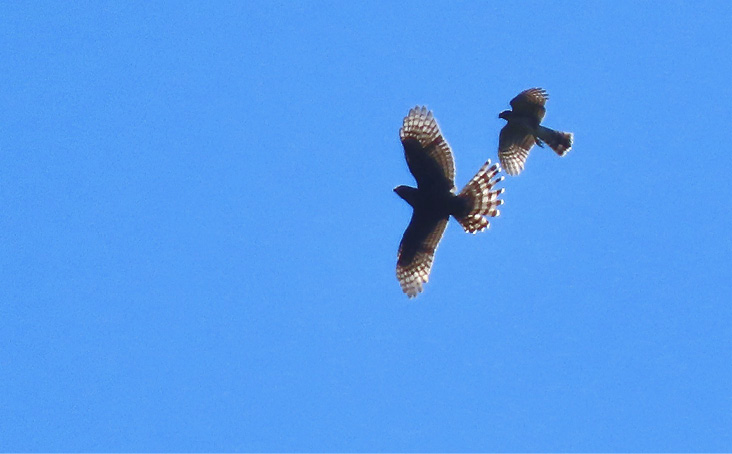Wayne R. Petersen

SUSAN BROWNE
Readers will no doubt recognize these mystery species as raptors —most likely hawks of some kind. Because there is a noticeable difference in size between the two birds, there are alternative identification possibilities to consider. One possibility is that there are two different species in the picture. The other is that the birds are different genders of the same species. Noticeable difference in gender size is not uncommon in certain raptor species, e.g., Northern Harrier, Cooper’s Hawk, and Peregrine Falcon.
In hawk identification, a useful first consideration is to place an unidentified individual into one of several distinct taxonomic categories. The overall shape and length of the wings and tail, the relative size of the head in front of the wing, and the feather pattern of the underparts, wings, and tail are especially important to notice. In the field, characteristic flight behavior is also a useful identification aid, and sometimes vocalizations can be helpful in distinguishing high-flying or distant individuals, but none of these are useful to the mystery raptors in print.
To view the rest of the article you'll need to
subscribe. Bird Observer publishes original articles on birding locations, on avian populations and natural history, on regional rarities, field notes, field records, photographs, and art work.